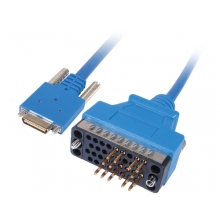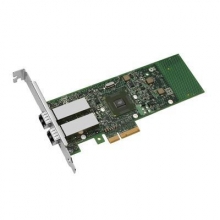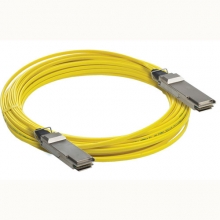- Optical Transceivers
- SFP+ Transceivers
- XENPAK Transceivers
- XFP Transceivers
- X2 Transceivers
- SFP Transceivers
- Compatible SFP
- 3Com SFP
- Alcatel-Lucent SFP
- Allied Telesis SFP
- Avaya SFP
- Brocade SFP
- Cisco SFP
- D-Link SFP
- Dell SFP
- Enterasys SFP
- Extreme SFP
- Force10 SFP
- Foundry SFP
- H3C SFP
- HP SFP
- Huawei SFP
- Intel SFP
- Juniper SFP
- Linksys SFP
- Marconi SFP
- McAfee SFP
- Netgear SFP
- Nortel SFP
- Planet SFP
- Q-logic SFP
- Redback SFP
- SMC SFP
- SUN SFP
- TRENDnet SFP
- ZYXEL SFP
- Other SFP
- FE SFP
- GE SFP
- OC3 SFP
- OC12 SFP
- OC48 SFP
- Copper SFP
- CWDM SFP
- DWDM SFP
- BIDI SFP
- Fiber Channel SFP
- Multi-Rate SFP
- SGMII SFP
- Compatible SFP
- GBIC Transceivers
- Passive Components
- Networking
- Cables
- Equipments
- Tools
- Special Offers


Commercial And Industrial Facilities In Europe
Honeywell (NYSE: HON) today announced it has been selected by Scottish and Southern Energy plc (SSE) to conduct the first automated demand response (Auto DR) pilot project for commercial and industrial facilities in Europe. The Auto DR project will give SSE the ability to work with its business customers to temporarily reduce or shift energy use when overall demand spikes, creating transmission and distribution bottlenecks.
While meeting electricity needs is typically not an issue, the amount of power required to satisfy peak demand is quickly rising, pushing network capacity and creating the potential for future outages. The investment required to replace or reinforce the infrastructure is significant, as is the disruption a large public works project can create. This is a growing concern in urban areas across the U.K. and Europe.
SSE will use the pilot to develop a long-term strategy for Auto DR, and the project will provide valuable insight for other distribution network operators (DNOs) across the continent. The initial deployment is being supported by the Low Carbon Network Fund, which was established by Britain’s energy regulator Ofgem to promote the development of energy conservation technologies and implementation of smart grid solutions.
Stewart Reid, future networks and policy manager for Scottish and Southern Energy, which transmits and distributes electricity to nearly 3.5 million businesses, offices and homes: “SSE’s core purpose is to provide the energy people need in a reliable and sustainable way. Automated demand response is one of a portfolio of tools to make sure we do that, and we are pleased to be working with Honeywell on this project in the Thames Valley.”
As part of the pilot, Honeywell will use several technologies in its portfolio — including offerings from Akuacom and Tridium — to connect SSE with commercial and industrial buildings on the utility’s Bracknell network in southern England. The Demand Response Automation Server (DRAS) from Akuacom allows the utility to alert customers when energy use is expected to peak and create grid congestion. At each facility, a Tridium controller will help automate load-shedding strategies during these periods. The controller listens for signals from the DRAS and communicates with the building management system, which then makes short-term changes based on parameters the customer sets in advance. The changes range from turning off banks of lights to cycling equipment on and off.
In addition to providing and implementing the technology, Honeywell will offer consulting and engineering services to help the customers develop shed strategies, looking for ways to briefly reduce energy use with minimal impact to operations. Honeywell will also investigate opportunities to decrease day-to-day consumption, which will help participants reduce their operating costs and environmental impact, and align with Carbon Reduction Commitment legislation.
This is pioneering work by SSE and Honeywell since previous programs have been largely manual and cumbersome to initiate, which meant building operators had to dedicate the necessary resources to participate and utilities couldn’t count on a consistent response. The Akuacom and Tridium technologies are able to interact with virtually any building system, providing a reliable decrease in consumption with minimal input. That’s because the solution is based on open, industry-accepted standards. Should SSE decide to change solution providers, it can do so without the risk and cost of stranded assets.
Paul Orzeske, president of Honeywell Building Solutions: “We were the first to apply Auto DR technology in Asia and North America. And the pilot with SSE will help prove that it’s portable and flexible enough to meet the challenges of utilities around the world. Reducing peak demand and increasing efficiency are some of the greenest and cleanest options when it comes to energy. So we’re excited to demonstrate the benefits to SSE and the broader community, and set the stage for implementations on a much larger scale.”
Honeywell has a legacy of working with both utilities and their customers, giving it a unique perspective on how to quickly realize the benefits of the evolving grid. With controls in more than 150 million homes, 10 million buildings and thousands of industrial sites, and experience managing demand response and energy efficiency programs for more than 100 utilities, Honeywell has the offerings and experience to empower smart energy users.



















































